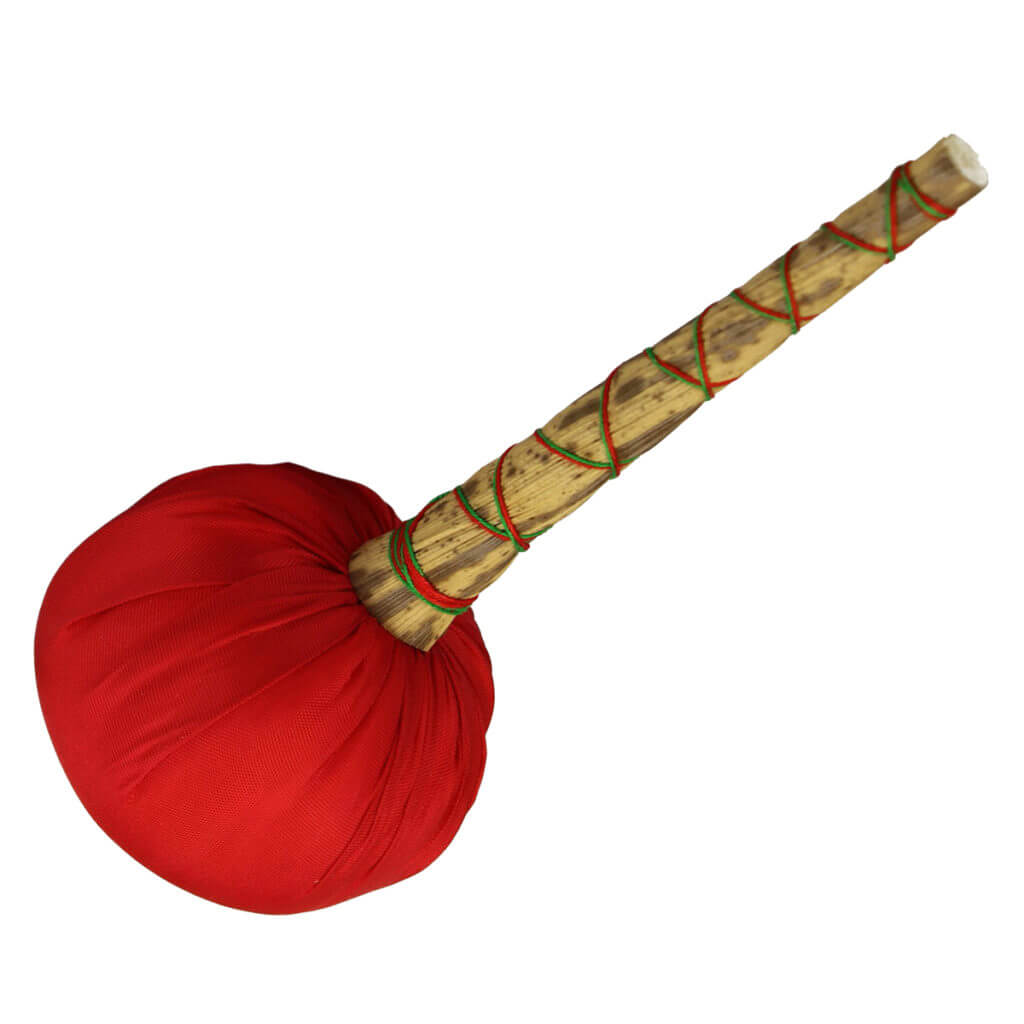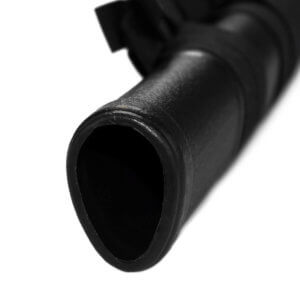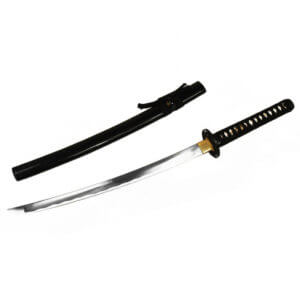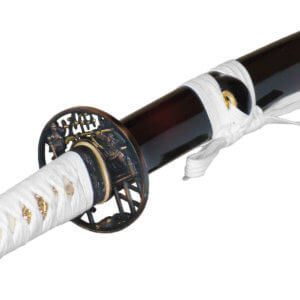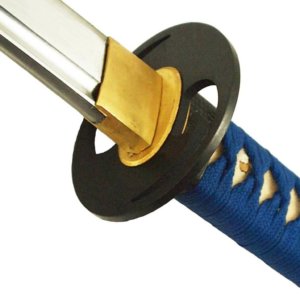Uchiko is a fine sword powder that is wrapped in a silk cloth and attached to a stick. It is often part of sword care sets. It is used to remove dirt, impurities and moisture from the sword blade. In our Centreboard care instructions to find out how best to use the sword powder.
In this article, we would like to present the two most common variants of Uchiko powder.
Which Uchiko powder variants are available?
There are basically two different types of uchiko sword powder. On the one hand, there is the original, which is obtained from the uchigumori stone. On the other hand, there is the variant that consists of very fine talcum powder.
However, under no circumstances should an inferior powder be used, as its powder is often too coarse or contaminated with other ingredients because it has been insufficiently filtered. This can permanently damage sword blades!
The original Uchiko sword powder
Original uchiko powder is fine limestone powder that is extracted during the sword manufacturing process.
In one of the final manufacturing steps, each katana is polished. This is an important process. The profession of sword polisher even has its own name in Japan: Togishi. Various whetstones are used to polish the sword. Two of these are the Hazuya and the Jizuya stone, which are used for thin grinding of the sword. The fine powder that is produced during sharpening with these two stones is the original uchiko powder. It has a slightly abrasive (grinding) effect. Occasionally it is supplemented with powder from the Tsunoko stone to utilise its degreasing effect, which serves to remove oil residues from the sword blade during subsequent use.
Differences in quality
There are major differences in the quality of the original uchiko powder. The fineness of the powder is decisive for good quality. Good uchiko powder is filtered several times to remove unwanted components. Yoshino-gami paper and silk cloths are used as filters. It is not uncommon for good uchiko powder to be filtered over 100 times until it is fine enough.
Accordingly, if poor quality uchiko powder is used, it cannot be ruled out that it will scratch the sword blade due to inadequate production.
Uchiko with talcum powder
Uchiko made from talcum powder is the cost-effective alternative to the original solution.
Talcum is the pulverised form of talc. This is a mineral and consists of steatite and magnesium silicate hydrate. Most people know talcum as the white powder that gymnasts use to absorb moisture from their hands. But talc not only absorbs moisture, it also absorbs grease, which is why it is also suitable as a sword powder. Talcum powder is not irritating to the eyes or skin, but it should not be inhaled under any circumstances. Its abrasive effect is comparatively low, which is why it is also used in gentle household scouring agents. When used on the steel blade of a samurai sword, it has a correspondingly low "scouring effect" and can therefore be described as particularly gentle.
Abrasion: the curse and blessing of sword care
Abrasion (more precisely abrasive wear) is the technical term for the removal of material caused by another material.
The basic dilemma with regard to sword care is that certain impurities and defects are difficult to remove if the abrasive effect is too low. If the abrasive effect is too high, on the other hand, the material of the blade is gradually removed (very slowly, of course).
Our personal recommendation
We are often asked which Uchiko material is the better one. The answer, as so often, is: it depends.
For "everyday" sword care, which involves removing external moisture and dirt, talcum uchiko is also fine. As it does not remove any material from the blade, absorbs moisture and old oil and is easy on the wallet. Alternatively, spirit or similar can be used instead of talcum powder.
As soon as the condition of the sword requires it, for example if there are "veils" on the blade, stubborn stains, signs of rust, small scratches, etc., limestone uchiko should be used to remove these phenomena. However, it should not be rubbed excessively in one place.
How is Uchiko used for sword care?
Click here to display content from www.youtube-nocookie.com.

